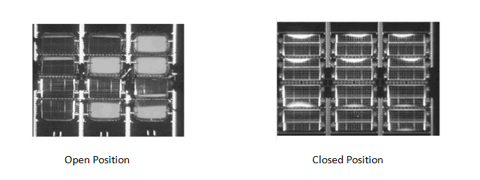Space hardening is the technique through which we make our circuits resistant to the effects of radiation. Radiation in general is of two types: ionizing radiation and non-ionizing radiation. For deep space the radiation is split into trapped and transient types.
The trapped radiation refers to the radiation caused by subatomic particles (protons and electrons) which are trapped by the earth’s magnetic field. The transient radiation is caused due to the protons and cosmic rays which exist in the space.
Our spacecraft during its travel will encounter these radiations. As a result the circuits will experience glitches. These glitches may further lead to huge loss in data or might even result in corruption of data leading to wrong inferences. In extreme conditions the radiation may also lead to permanent damage of the hardware/circuits.
We must hence make sure that our circuits are resistant to the radiation. We plan to achieve this by implementing the following ideas:
1) Using heating/cooling systems for avoiding heat radiation.
2) Redesigning the layout of circuits such that they remain shielded from the radiation faced in the deep space.
3) By carrying out error correction process on the data, and thereby correcting these errors.
4) By having redundant hardware/circuits.
5) Using Multi-layer thermal insulation blankets.
Heating and Cooling Systems
Our spacecraft has to be resistant to a wide range of temperature. As our spacecraft travels through space, it will encounter extreme conditions of heat and cold. During the launch of the spacecraft from the earth it experiences tremendous heat due both to the actual launch along with the atmosphere friction. Once in the solar system, it experiences strong solar radiation from the sun. Once the spacecraft is in deep space, it is surrounded by freezing temperatures; hence it’s very important that our systems function well in either of the extreme conditions.
During the launching and the travel through the solar system we can use cooling systems which will maintain the temperature around the hardware/circuits to an optimum temperature. Once the spacecraft reaches deep space and is surrounded by freezing temperatures we can switch to the heating systems. This way we can protect our systems from suffering a failure.
Redesigning the Layout for the Hardware
Another effective method of protecting our spacecraft would be by using lourves. Our method of using lourves is based on the ESA’s comet chaser Rosetta.
We observe that at first the spacecraft experiences high temperatures followed by freezing temperatures. The method of lourves takes advantage of this. The lourves open up and trap the heat inside when the temperatures are high. Later when it experiences cold temperatures it shuts, and as a result the temperature is retained inside. It basically controls the temperature by capturing the heat inside or letting it out by opening and closing. The Lourves (shown below) are basically something like a shutter and are made up of MEMS (Micro Electro Mechanical Systems).

Error Correction
Another way of overcoming the effect of space hardening can be done by introducing error correction mechanism. In such cases error can be detected and then the corrections can be made accordingly.
Redundancy
Redundancy can be introduced into the system to overcome glitches. One of our ideas of introducing redundancy is by having more than one computer/system to do the calculation and processing of data. We then compare the output data from the various computers. Consistency in the data would mean that the circuits are working fine. In the case when an inconsistency arises, the system giving a different output would be killed/made dysfunctional.
Redundancy can also be included in various components. If one of the components stops functioning then it can be replaced. This would hence keep the spacecraft in a proper working condition.
Using Multi-Layer Thermal Insulation Blankets
Another problem that the spacecraft would have to face is meteor showers. There are numerous meteors zooming in space; some are in the size of dust particles. When these collide with the spacecraft, they result in a radiation and hence may result in failure of some systems. To protect the satellite from this kind of radiation we can use Multi-Layer Thermal Insulation blankets.



